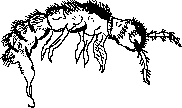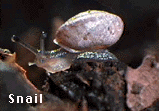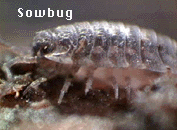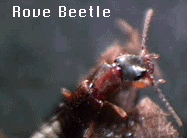The Michigander writes:
The bird posts and flower posts combining care and feeding and doctrine are excellent. They are becoming my favorites. I have a bird question.
Are your feeders close to windows? Mine are some 7 feet front the living room window and birds keep flying into the window pane. Some learn that's not the direction to leave the feeders, some don't. I wonder, with the feeders were closer to the window, if the birds would not fly away toward the window. Or should the feeders be farther away from the house, spoiling the viewing prospects?
***
GJ - I am guessing that the birds, after feeding, see the sky in the reflection in the windows. They fly into the image. When my windows had a mirror effect in Phoenix, from a reflective film, we had quite a few bird strikes.
I keep feeders close to the window. They get used to flying there for rest and a snack. In the summer the feeder is empty because the starlings and squirrels eat everything. In Bella Vista I had so many feeders going at once that driving up to the house was like arriving at a bird sanctuary. That was ideal for birds, since we had a creek, a lawn, bushes, and oak trees - all convenient for their food and housing.
I will use a lot of suet for the winter, since fat-eating birds are also insect-eaters. I will hang a number of mesh bags on trees if I can get suet for a good price and the raccoons do not feast on them.
For now I am growing sunflowers in three different places. I enjoy watching them grow so tall (except for the Japanese one-footers) and turn into seedheads of massive size.
Writing about Creation and doctrine is easy, because so many illustrations from the Bible are based upon common knowledge of the natural world.
Mark's Gospel is known for the seed growing secretly parable - the only passage truly unique to Mark.
Mark 4:26 And he said, So is the kingdom of God, as if a man should cast seed into the ground;
27 And should sleep, and rise night and day, and the seed should spring and grow up, he knoweth not how.
28 For the earth bringeth forth fruit of herself; first the blade, then the ear, after that the full corn in the ear.
29 But when the fruit is brought forth, immediately he putteth in the sickle, because the harvest is come.
The living seed is like the Word, ready to grow when broadcast.
We are like the sower who has no idea how this happens. We can look at charts and study terms. But the complexity of the seed waking up in moisture and soil, sending down a little root and a tiny plant upward - that is a mystery to us.
We know as little about how the Word will grow as we do about the seed growing.
I planted a lot of seed along the fenceline, because the dead leaves and grass formed a natural mulch. Some of them will use the support of the chain-link fence. But most of those seeds have not shown up. Some weeds responded well to the watering, so I am suspicious that my bird friends watched my work a little too carefully.
Still, some plants will germinate slowly. Some seeds will rot in the soil. Some will definitely be eaten by a wide variety of animals. Seed purchases are estimated thus - an old gardeners rhyme:
1. One for the mouse.
2. One for the crow.
3. One to rot.
4. One to grow.
 |
| Malabar spinach is good for soups. |
I now have some spinach, lettuce, and a place to plant them. Some will say, "Why did you wait until it was hot, when spinach and lettuce will bolt (go to seed)?"
Like Hamlet, I was dithering about how to open up garden space. I did not want to rototill - or shovel until I experienced once more the pain of rotator cuff injuries. One might harm the utilities, flagged or not. The other might force me to drink coffee two-handed, again. That happened with snow-shoveling. One day of glory, one year of pain.
If I do a really bad job with both crops, I will still have a fair amount of fresh lettuce and spinach before they go to seed. After that, I will have Malabar spinach growing and loving the heat, providing huge leaves that some people prefer to spinach.
I can count on many failures and successes in the garden, but even the poor performances are far better than not sowing seed at all, not planting anything.
I need a good Delphic saying like, "If you are not planting, you are still planting, because the weeds are planting theirselves." Bad grammar makes it more homespun, and user-friendly for WELS.
I still get troubled when clergy tell me they are disappointed by their numbers. I learned early to count anything above zero as a success. Why scowl and get upset at those who are there for the Means of Grace? How can we measure how the living seed of the Word will flourish and grow in the future?
Equally alarming are those assemblies where the participants are gulled into accepting their Babtist training at the hands of "conservative" Lutherans. The leaders will say, "It was a great success!" And I will say - for which Kingdom, the Kingdom of Christ or the Kingdom of Satan? Those are the Two Kingdoms at war with each other until the end of time, according to Luther.
Sowing seed abundantly is always going to favor the birds, butterflies, and bees. Food is concentrated. Insects flourish, and so do their predators. Those hated spiders spin beautiful webs that glisten in the morning dew. Birds wake up to sing Matins each morning and turn the insect population into little songbirds, a good equation.
When I spend time in the garden, birds become friendly and do not rush away. They quickly learn that the rose garden will have treats from berries and grapes too old to eat. Scraps from the peanut jar go outside as well.
The result is hearing bird-calls when I go outside. Bluejays and robins have landed above me in a tree and called out, something like, "Where's my snack?"
The compost pile becomes another feeder when the materials are almost finished. The moist interior supports a crop of noisy, moving arthropods (all joint-footed creatures). Birds perch on the wire and dive in for a real meal.
I have seen several "compost piles" that were really garbage piles. The clergy owners did not understand the concept, so they produced a smelly pile of rotting food.
So it is when people want to be teachers of the Word but do not understand what they are handling. They wander from one fad to another, one popular writer after another.
Here are the basics for compost:
- It might as well be fairly large, because there will never be enough of it when finished - perhaps five feet high and seven feet across. I enclose mine in chicken-wire. Other designs require more labor.
- Compost should be in the shade as much as possible.
- The materials rest on bare soil or sod, because the soil creatures climb into the pile as required - or as designed by the Creator.
- Good materials include anything that has been alive, but not meat. Food garbage will attract bigger animals, unless it is just leafy leftovers. Kids - help the compost with your stewed, creamed spinach.
- Animal manures are good, except for cat and dog offerings, which may host organisms that spread to humans.
- Fresh green materials like grass are hot - warming up the compost fast and starting the process. Weeds can go in, and their seeds will be killed if everything is done well. I would put in dandelions, which are really an herb, but not witchgrass. Some interesting flowers will spread through compost if they are put in. Feverfew is one.
- Dead leaves are great in compost but do not heat up. Some mix green stuff with leaves. I toss it all in together.
- Soil can be added in layers, since it is alive with bacteria, molds, and soil creatures. Soil has the effect of sanitizing rot and suppressing bad aromas.
- I put a few rotten fruits in the compost from time to time, but I fire them into the soft inner core of leaves, so we do not create a village dump aroma. A rotten apple is mostly water and will help keep the compost moist and the creatures of rot happy. "You eat my apple, but centipedes will eat you. Bwa-ha-ha."
- Here are the denizens of compost - a great chart from Cornell.
Invertebrates of the Compost Pile
- In small-scale outdoor composting systems, such as backyard compost piles, soil invertebrates are likely to contribute to the decomposition process. Together with bacteria, fungi, and other microbes, these organisms make up a complex food web or energy pyramid with primary, secondary, and tertiary level consumers. The base of the pyramid, or energy source, is made up of organic matter including plant and animal residues.
Tertiary Consumers
(organisms that eat secondary consumers)
centipedes, predatory mites,
rove beetles, fomicid ants,
carabid beetles
Secondary Consumers
(organisms that eat primary consumers)
springtails, some types of mites, feather-winged beetles
nematodes, protozoa, rotifera, soil flatworms
Primary Consumers
(organisms that eat organic residues)
bacteria, fungi, actinomycetes,
nematodes, some types of mites, snails, slugs,
earthworms, millipedes, sowbugs, whiteworms
Organic Residues
leaves, grass clippings, other plant debris,
food scraps,
fecal matter and animal bodies including those of soil invertebrates
As you can see in this pyramid, organic residues such leaves or other plant materials are eaten by some types of invertebrates such as millipedes, sow bugs, snails and slugs. These invertebrates shred the plant materials, creating more surface area for action by fungi, bacteria, and actinomycetes (a group of organisms intermediate between bacteria and true fungi), which are in turn eaten by organisms such as mites and springtails.
Many kinds of worms, including earthworms, nematodes, red worms and potworms eat decaying vegetation and microbes and excrete organic compounds that enrich compost. Their tunneling aerates the compost, and their feeding increases the surface area of organic matter for microbes to act upon. As each decomposer dies or excretes, more food is added to web for other decomposers.
 Nematodes: These tiny, cylindrical, often transparent microscopic worms are the most abundant of the physical decomposers - a handful of decaying compost contains several million. It has been estimated that one rotting apple contains 90,000. Under a magnifying lens they resemble fine human hair.
Nematodes: These tiny, cylindrical, often transparent microscopic worms are the most abundant of the physical decomposers - a handful of decaying compost contains several million. It has been estimated that one rotting apple contains 90,000. Under a magnifying lens they resemble fine human hair.
Some species scavenge on decaying vegetation, some feed on bacteria, fungi, protozoa and other nematodes, and some suck the juices of plant roots, especially root vegetables.
 Mites: Mites are the second most common invertebrate found in compost. They have eight leg-like jointed appendages. Some can be seen with the naked eye and others are microscopic. Some can be seen hitching rides on the back of other faster moving invertebrates such as sowbugs, millipedes and beetles. Some scavenge on leaves, rotten wood, and other organic debris. Some species eat fungi, yet others are predators and feed on nematodes, eggs, insect larvae and other mites and springtails. Some are both free living and parasitic. One very common compost mite is globular in appearance, with bristling hairs on its back and red-orange in color.
Mites: Mites are the second most common invertebrate found in compost. They have eight leg-like jointed appendages. Some can be seen with the naked eye and others are microscopic. Some can be seen hitching rides on the back of other faster moving invertebrates such as sowbugs, millipedes and beetles. Some scavenge on leaves, rotten wood, and other organic debris. Some species eat fungi, yet others are predators and feed on nematodes, eggs, insect larvae and other mites and springtails. Some are both free living and parasitic. One very common compost mite is globular in appearance, with bristling hairs on its back and red-orange in color.
 Springtails: Springtails are extremely numerous in compost. They are very small wingless insects and can be distinguished by their ability to jump when disturbed. They run in and around the particles in the compost and have a small spring-like structure under the belly that catapults them into the air when the spring catch is triggered. They chew on decomposing plants, pollen, grains, and fungi. They also eat nematodes and droppings of other arthropods and then meticulously clean themselves after feeding.
Springtails: Springtails are extremely numerous in compost. They are very small wingless insects and can be distinguished by their ability to jump when disturbed. They run in and around the particles in the compost and have a small spring-like structure under the belly that catapults them into the air when the spring catch is triggered. They chew on decomposing plants, pollen, grains, and fungi. They also eat nematodes and droppings of other arthropods and then meticulously clean themselves after feeding.
 Earthworms: Earthworms do the lion's share of the decomposition work among the larger compost organisms. They are constantly tunneling and feeding on dead plants and decaying insects during the daylight hours. Their tunneling aerates the compost and enables water, nutrients and oxygen to filter down. "As soil or organic matter is passed through an earthworm's digestive system, it is broken up and neutralized by secretions of calcium carbonate from calciferous glands near the worm's gizzard. Once in the gizzard, material is finely ground prior to digestion. Digestive intestinal juices rich in hormones, enzymes, and other fermenting substances continue the breakdown process. The matter passes out of the worm's body in the form of casts, which are the richest and finest quality of all humus material. Fresh casts are markedly higher in bacteria, organic material, and available nitrogen, calcium, magnesium, phosphorus and potassium than soil itself." (Rodale)
Earthworms: Earthworms do the lion's share of the decomposition work among the larger compost organisms. They are constantly tunneling and feeding on dead plants and decaying insects during the daylight hours. Their tunneling aerates the compost and enables water, nutrients and oxygen to filter down. "As soil or organic matter is passed through an earthworm's digestive system, it is broken up and neutralized by secretions of calcium carbonate from calciferous glands near the worm's gizzard. Once in the gizzard, material is finely ground prior to digestion. Digestive intestinal juices rich in hormones, enzymes, and other fermenting substances continue the breakdown process. The matter passes out of the worm's body in the form of casts, which are the richest and finest quality of all humus material. Fresh casts are markedly higher in bacteria, organic material, and available nitrogen, calcium, magnesium, phosphorus and potassium than soil itself." (Rodale)
 Slugs and snails (left): Slugs and snails generally feed on living plant material but will attack fresh garbage and plant debris and will therefore appear in the compost heap.
Slugs and snails (left): Slugs and snails generally feed on living plant material but will attack fresh garbage and plant debris and will therefore appear in the compost heap.
 Centipedes (right): Centipedes are fast moving predators found mostly in the top few inches of the compost heap. They have formidable claws behind their head which possess poison glands that paralyze small red worms, insect larvae, newly hatched earthworms, and arthropods - mainly insects and spiders. To view a QuickTime movie of the centipede click on this image
Centipedes (right): Centipedes are fast moving predators found mostly in the top few inches of the compost heap. They have formidable claws behind their head which possess poison glands that paralyze small red worms, insect larvae, newly hatched earthworms, and arthropods - mainly insects and spiders. To view a QuickTime movie of the centipede click on this image
 Millipedes: They are slower and more cylindrical than centipedes and have two pairs of appendages on each body segment. They feed mainly on decaying plant tissue but will eat insect carcasses and excrement.
Millipedes: They are slower and more cylindrical than centipedes and have two pairs of appendages on each body segment. They feed mainly on decaying plant tissue but will eat insect carcasses and excrement.
 Sow Bugs (right): Sow Bugs are fat bodied crustaceans with delicate plate-like gills along the lower surface of their abdomens which must be kept moist. They move slowly grazing on decaying vegetation.
Sow Bugs (right): Sow Bugs are fat bodied crustaceans with delicate plate-like gills along the lower surface of their abdomens which must be kept moist. They move slowly grazing on decaying vegetation.
 Beetles (left): The most common beetles in compost are the rove beetle, ground beetle and feather-winged beetle. Feather-winged beetles feed on fungal spores, while the larger rove and ground beetles prey on other insects, snails, slugs and other small animals.
Beetles (left): The most common beetles in compost are the rove beetle, ground beetle and feather-winged beetle. Feather-winged beetles feed on fungal spores, while the larger rove and ground beetles prey on other insects, snails, slugs and other small animals.
Ants: Ants feed on aphid honey-dew, fungi, seeds, sweets, scraps, other insects and sometimes other ants. Compost provides some of these foods and it also provides shelter for nests and hills. Ants may benefit the compost heap by moving minerals especially phosphorus and potassium around by bringing fungi and other organisms into their nests.
Flies: During the early stages of the composting process, flies provide ideal airborne transportation for bacteria on their way to the pile. Flies spend their larval phase in compost as maggots, which do not survive thermophilic temperatures. Adults feed upon organic vegetation.
Spiders: Spiders feed on insects and other small invertebrates.
 Pseudoscorpions: Pseudoscorpions are predators which seize victims with their visible front claws, then inject poison from glands located at the tips of the claws. Prey include minute nematode worms, mites, larvae, and small earthworms.
Pseudoscorpions: Pseudoscorpions are predators which seize victims with their visible front claws, then inject poison from glands located at the tips of the claws. Prey include minute nematode worms, mites, larvae, and small earthworms.
Earwigs: Earwigs are large predators, easily seen with the naked eye. They move about quickly. Some are predators. Others feed chiefly on decayed vegetation.
Compost liturgy
The creatures do their work in the proper order. Have you even sung a recessional hymn first? It may be a great hymn, but it does not feel exactly right, like singing "How Firm a Foundation" to "O Come All Ye Faithful."
Earthworms are going to melt during the initial warmup. They stay away. In fact, their appearance means the compost is mostly complete, so they can feast. They should be called Blister, because they don't show up until the work is done. But they do work hard in the soil itself, which is why all gardeners love them.
Thermophilic organisms love nitrogen and help heat up the compost to break it down. Put hot (high nitrogen) ingredients in and the compost will smoke. Grass plus rabbit manure = smoke signals. Pure sod will heat up and break down quickly - simply because all the ingredients are present in each lump. That is why I mulch to kill sod, because it is actually acquiring a new life as composted soil teeming with earthworms. Or perhaps teaming with earthworms. Either way, composted sod is great.
I read various scientific posts to support my information. Most of them spout evolutionary doctrine while describing a well organized, self-directed process, which happens all over the world. What if the organisms did not arrive? The soil would stop rejuvenating; the plants would grow weaker, and the entire foundation of life on earth would fade into blackness.
That is why Luther said God was a good manager, Someone we should trust to keep things going well.




